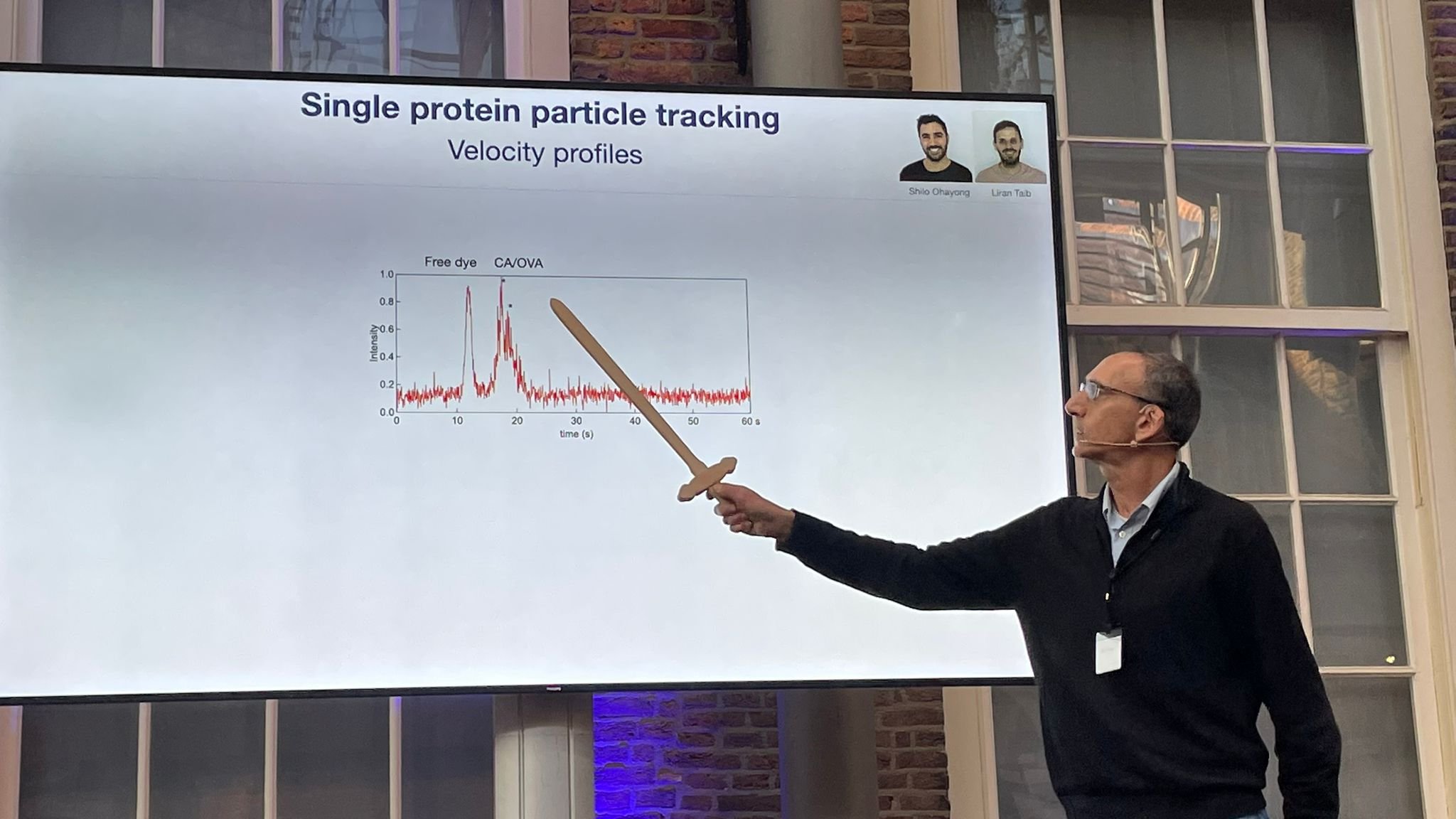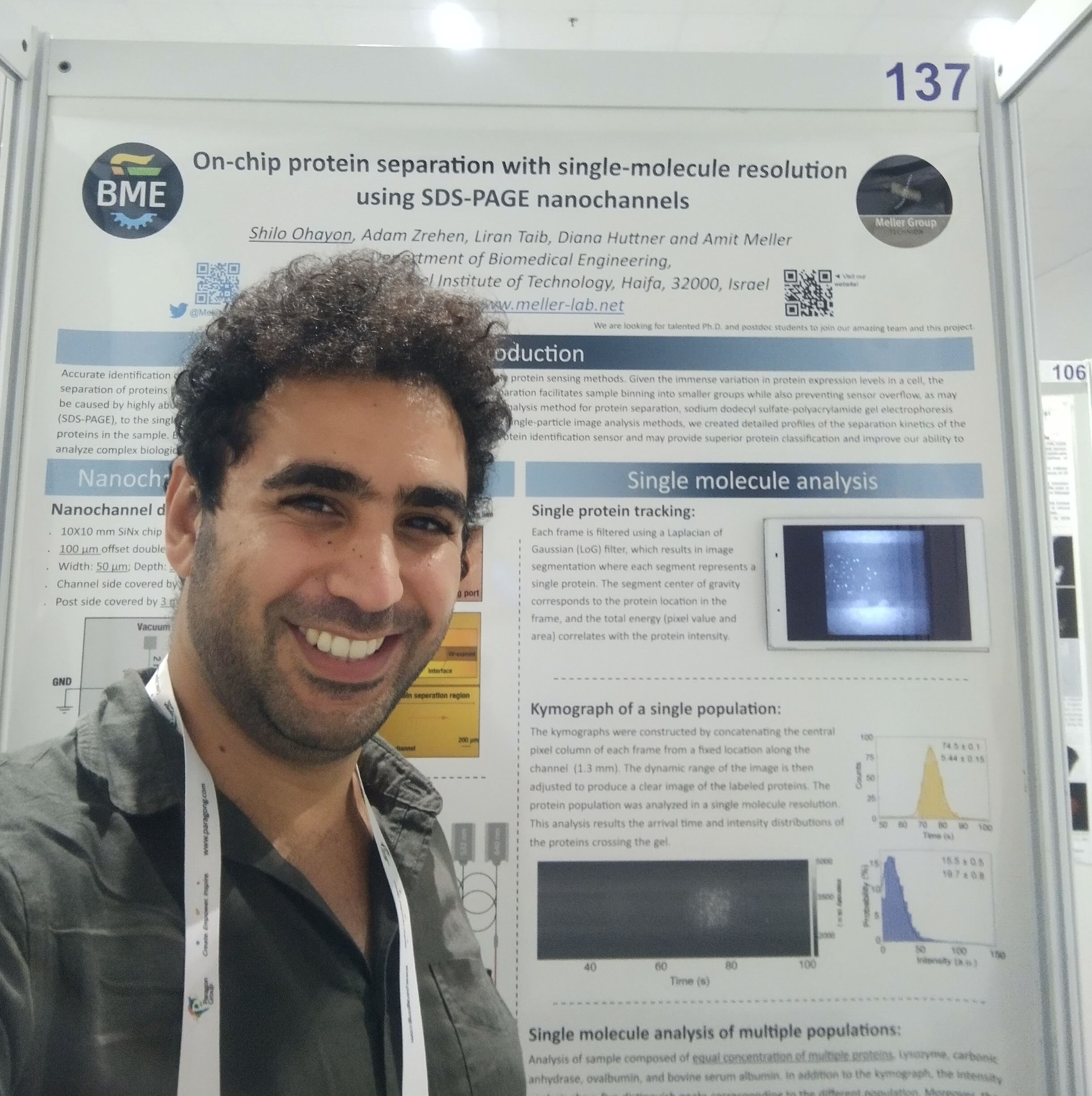Noam presented his final PhD seminar entitled "Single-Molecule Protein Sensing for Early AMD Diagnosis”
In his seminar, he talked about the use of single-molecule sensing technology for early detection of age-related macular degeneration (AMD), a leading cause of vision loss in older adults. Unlike traditional methods that detect physical damage, this approach analyzes molecular biomarkers like VEGF and Clusterin with high precision. Single-molecule techniques, such as nanopore-based sensors or dynamic sensing using nanoparticles, allow real-time tracking of individual protein interactions, enabling ultrasensitive detection at subfemtomolar levels. These methods improve diagnostic accuracy by identifying molecular changes before significant vision loss occurs, paving the way for earlier intervention and personalized treatments. This innovation could transform AMD management, reducing its socioeconomic impact and enhancing patient outcomes.
Success at SMPS 2025 Conference in Bolzano, Italy
Part of our lab team: Prof. Meller, Dr. Marzia Issorai, Dr. Navneet Varma, and Zoahr Rosentock participated in the SMPS 2025 Conference in Bolzano, Italy.
The SMPS 2025 Conference brings together leading experts in Soft Matter and Polymers, offering a platform for groundbreaking research and collaboration. Prof. Meller was a featured speaker, giving a lecture on our lab's SMPS research.
Congratulations to Dr. Marzia on winning the First Poster Prize. This remarkable achievement highlights our lab's innovative research.
You can learn more about the conference here.
Meller lab team new paper in Advanced Materials journal
Full-Length Single Protein Molecules Tracking and Counting in thin Silicon Channels
In this paper, we introduce a single-molecule method for parallel protein separation and tracking, yielding multi-dimensional and are electrophoretically separated by their mass/charge in custom-designed thin silicon channel with subwavelength height. This approach allows us to analyse thousands of individual proteins within a few minutes by tracking their motion during the migration. We demonstrate the power of the method by quantifying a cytokine panel for host-response discrimination between viral and bacterial infections.
Our lab members represented us in SMPS3 conference in Delft, the Netherlands.
Dr. Yulia Marom, Dr. Navneet Verma Chandra, Neeraj, Liran, Shilo, Noam, and Prof. Meller presented our research in single molecule sequencing. The group presented five different posters, each one on a different topic.
Neeraj Soni won the best presentation award at Single Molecule Biophysics Conference, France 2022
Neeraj Soni, a Ph.D. student in our group, won the best presentation award at Single Molecule Biophysics Conference, France 2022.
His presentation title : "Denatured protein translocations using sub 5 nm Solid-state nanopores”.
Proteins are the main constituents of all biological cells and are responsible for most of the cellular functions. Many of the current disease-specific biomarkers are proteins or modified versions of proteins hence creating a need for sensitive yet simple methods for protein identifications in clinical diagnostics applications. Herein, we developed a highly sensitive approach for identifying wide range lengths SDS denatured protein complexes. Given the simplicity and eradication of the tailor-made necessities, this assay holds the full potential to sequence the protein at a single-molecule level in the future.
Way to go Neeraj!
Congratulation to Shilo Ohayon!
Shilo Ohayon, a Ph.D. student in our group, won the best poster presentation at the NanoIL 2021.
His poster title : "On-chip protein separation with single-molecule resolution using SDS-PAGE nanochannels”.
The research's main aim is to identify and quantify proteins at a single molecule level using nanochannels. The use of nanochannel allows real-time tracking of the translocating proteins by a computer vision algorithm. The data obtained from each protein enables the identification of the protein and, by that, the whole sample. In the future, this technology could manifest faster and more efficient identification of proteins in biological and clinical samples and eventually will help in more accurate diagnostics.













